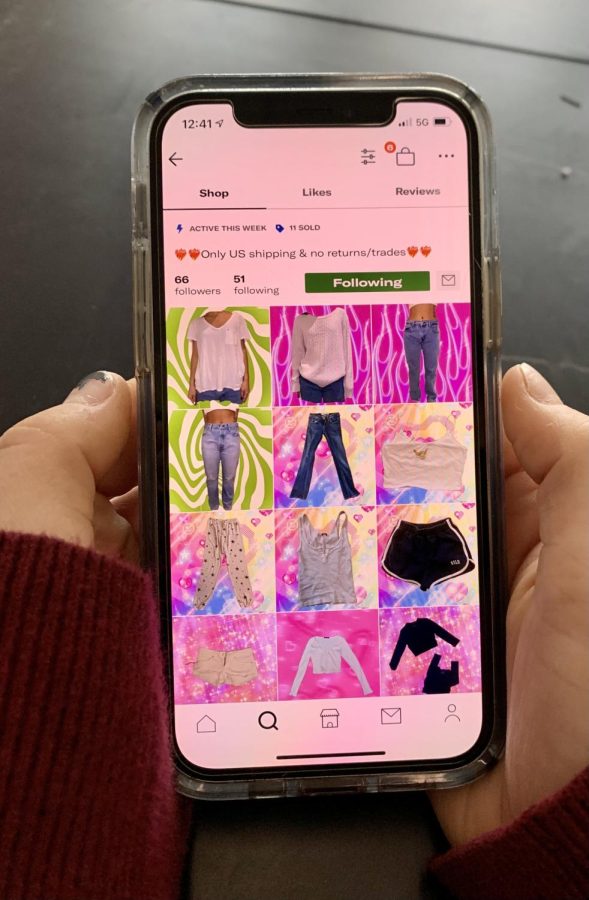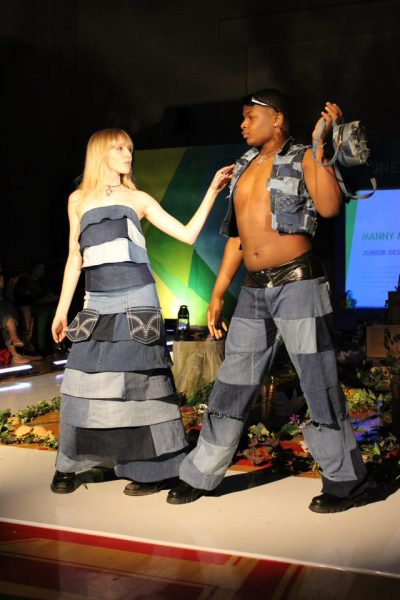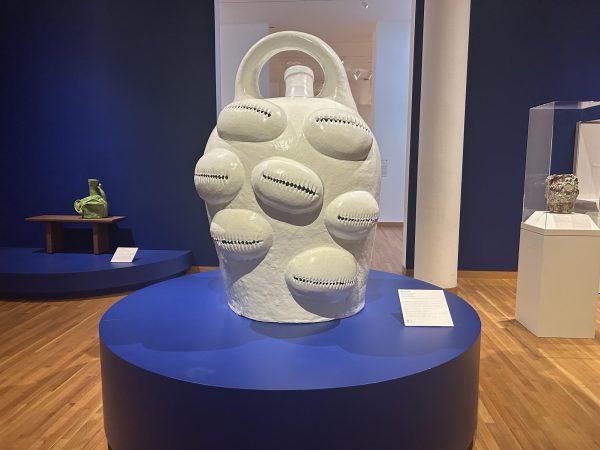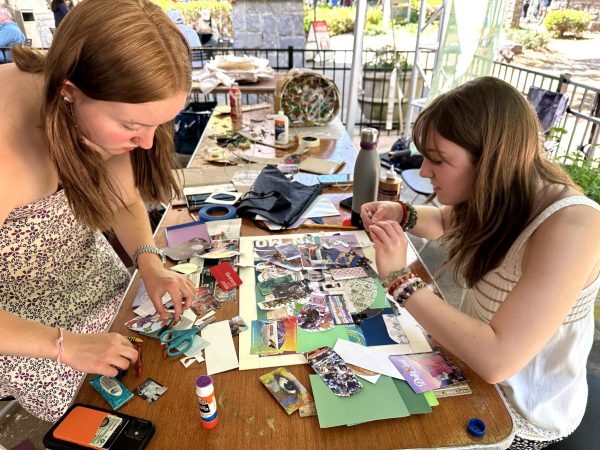Second-hand shopping reduces waste, combats climate change
Aesthetic arrangement: Many Depop users upgrade their profiles by adding backgrounds or try-on pictures to increase appeal for online shoppers.
As climate change concerns mount, younger generations are faced with the grim future of the planet and are searching for ways to prevent the crisis from intensifying further, specifically through the use of social media.
Fast fashion, or the mass production of clothing made and sold for an inexpensive price, is a significant contributor to climate change. Shopping is a popular pastime for many young people. This contributes to the growth of the fast fashion industry.
Many students, like junior Ava Likins, are aware of the negative effects companies such as H&M, SHEIN, Forever21 and Urban Outfitters have on the environment and make an effort to shop sustainably.
“Second-hand buying has a positive impact on the environment because you’re not contributing to the production of new clothing items,” Likins said. “Shopping sustainably is something that is important to me.”
Second-hand clothing apps such as Depop, Poshmark and Curtsy promote sustainability in the fashion industry, encouraging people to recycle their clothing and counteract fast fashion companies. Similar to companies such as Ebay, these apps promote an urban approach to selling clothing items to thousands of users around the world. Likins has sold several items on her Depop account and appreciates the affordability of second-hand shopping.
“I’ve been using Depop since last summer,” Likins said. “I wanted to clean out my closet and make some money since I had a lot of clothes that I didn’t wear anymore. I also find the cutest clothes there that I can’t find anywhere else. It’s a super easy way to make money. It’s like having my own business.”
Thousands of teenagers have decided to create accounts on other social media platforms, such as Instagram, to sell their clothing on a smaller scale. Evelyn Lowry, senior and president of the Earth and Sustainability Club, has owned a clothing account on Instagram for three years and promotes sustainability throughout the account.
“Fast fashion has a horrible impact on our planet,” Lowry said. “Interacting with your community through selling clothes and buying clothes second-hand can help reinforce the idea that fast fashion is not the only way to shop and is not the best way to shop.”
Although Lowry doesn’t make a substantial amount of profit, she appreciates the concept of selling clothing second-hand.
“I have been told that I need to raise my prices because I often don’t profit very much, but I am happy with the sales I have made,” Lowry said. “I usually sell clothes in the [$5 to $15] range.”
Outside of the online world, thrift shopping has gained traction with teenagers in an effort to reduce waste and recycle. As much as thrift shopping has positive effects on the environment, the increase of thrift shopping negatively impacts those who truly cannot afford to buy new, expensive clothing.
Sophomore Stella Frederick is passionate about the effects thrift shopping has on the environment and society.
“I thrift a lot because it’s cheaper than buying normal clothes,” Frederick said. “I feel like thrifting is becoming less and less sustainable. As demand increases and more people thrift to buy clothes affordably, it makes it harder for people that can’t afford nice clothes to actually get stuff. Overall [thrift shopping] should be accessible to anybody, just as long as we can respect those who really need [cheaper clothes].”
As thrift shopping and second-hand apps become more popular in society with younger generations, the future of sustainability looks brighter. Apps such as Depop are appealing to teenagers and continue to encourage people to look for more sustainable options. Likins has plans to continue her account and motivates her peers to create accounts of their own.
“My favorite part of the app is that I can find the cutest clothes that I can’t find anywhere else,” Likins said. “Ever since I created my account, my friends have been really interested in shopping on apps like Depop and Curtsy. I think that if more people use these apps, the whole fast fashion industry can be changed [for the better].”

Ally Bliss is a Senior and it is her second year writing for the paper. Outside of the Southerner, Ally plays lacrosse and runs cross country for Midtown....







